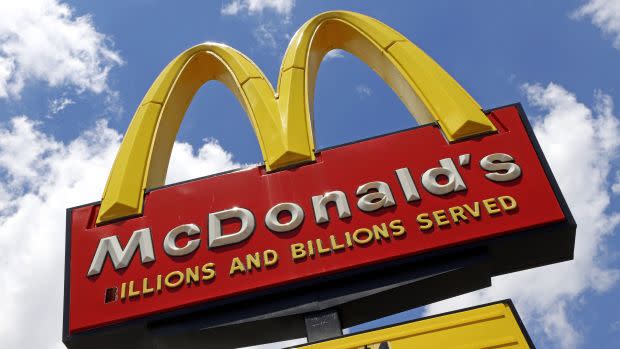McDonald’s is bumping up pay as low-wage workers suddenly have options

Low-wage workers in the US are seeing their pay increase en masse, and McDonald’s is the latest employer to boost wages.
As it looks to hire 10,000 new US employees over the next few months, the fast-food chain announced today it is raising the hourly wages for more than 36,500 employees at its company-owned restaurants by an average of 10%. Entry-level workers will earn between $11 to $17 an hour, and shift managers will earn between $15 to $20 an hour, depending on location.
The company says it expects average hourly wages to reach $15 an hour by 2024. McDonald’s owns just about 5% of its 13,900 US restaurants; the rest are operated by franchises who set their own pay and benefits at their stores.
“These actions further our commitment to offering one of the leading pay and benefits packages in the industry,” said Joe Erlinger, president of McDonald’s USA, in a press release.
The changes reflect how low-wage workers are having more options when it comes to jobs, or at least when it comes to pay. Earlier this week, Chipotle said it would boost its average wage to $15 an hour, as it looks to hire 20,000 employees across the US. In the past couple of years, big retailers have been upping wages, with four out of the five biggest US retail giants—Walmart, Amazon, Kroger, Costco—either increased wages or are committed to raising them to at least $15 an hour for some if not all of their workers. And just today, Amazon announced that it is looking to hire 75,000 warehouse workers where new hires will be paid more than $17 an hour.
Higher wages in low-wage industries
The competitiveness for workers among big retailers could be spilling over to the services industry. Even before the pandemic, wages for certain transportation and e-commerce jobs were higher than wages at fast-food companies. In fact, US Bureau of Labor Statistics data shows that “packagers” earned an average hourly wage of $14.07, and drivers who deliver goods such as food earn $15.32 an hour. On the other hand, fast-food workers earn an hourly wage of $11.80 an hour. That said, the extra earnings could take into account additional skills or training, such for driving.
This comes as the services industry has been facing a steep shortage of workers. A number of businesses, in food and services, have been offering incentives, from one-time bonuses to meals, and increasing wages to get back workers.
In the beginning of the pandemic, hard-hit restaurant workers were turning to jobs in e-commerce and warehousing. Data from jobs site Glassdoor showed last spring a 613% increase in restaurant servers searching for “Amazon” on Glassdoor. Other popular search interests include “remote jobs,” “warehouse,” and “supply chain.”
There’s the question of whether these workers will return to restaurant jobs, especially if they’re concerned about taking a customer-facing role while the pandemic continues. If workers prefer making the extra wages in warehousing or e-commerce, then there could be a permanent shift on how many workers are available for food services. At least, that is, until restaurants raise their wages even higher.
Sign up for the Quartz Daily Brief, our free daily newsletter with the world’s most important and interesting news.
More stories from Quartz:
